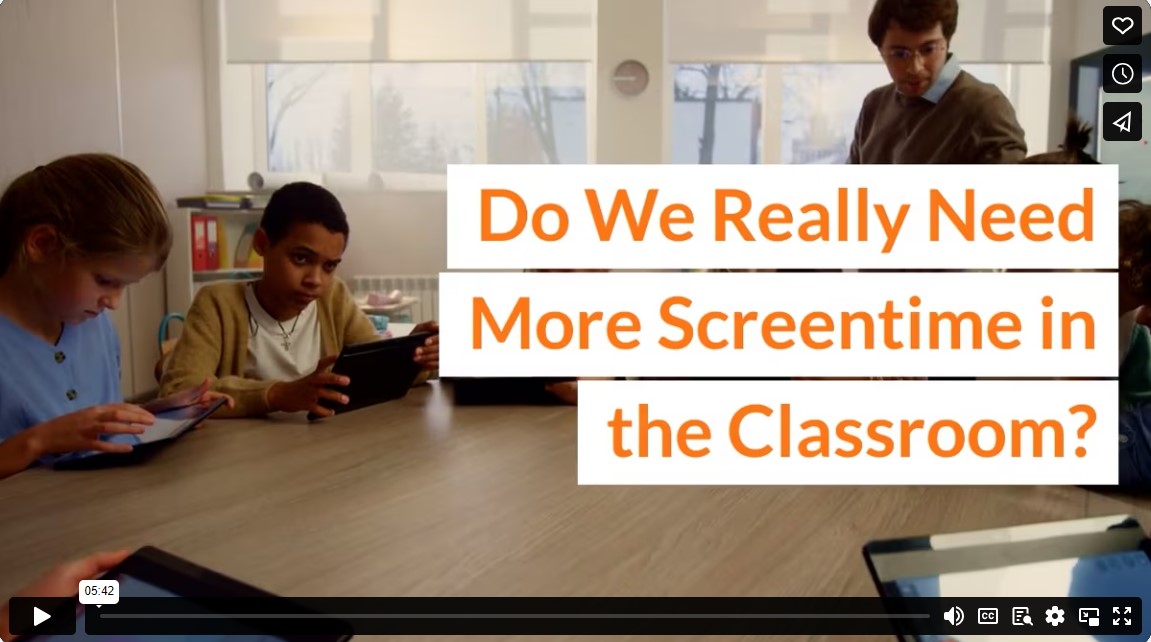Technology has forever changed the way we do life. It’s seeped into every corner, nook, and cranny of society, and it’s safe to say it’s not going anywhere. If you’re a parent with students in school, you might be wondering if the use of technology in the classroom is really necessary. After all, keeping the kids from constant screen time at home is already a struggle. Is digital usage in the classroom going to fuel an irreparable addiction?
As educators who are committed to providing the best possible education to our students, the faculty at our private school in Atlanta have put a lot of research into using technology to better education in a healthy way. We believe that balance is key and that teaching healthy and responsible tech usage is critical.
With that said, the benefits that technology can bring to a child’s education are unmatched and continue to expand. Here are seven reasons we believe technology is necessary for a successful learning experience:
1. Technology allows for interactive learning.
Classroom technology goes far beyond Chromebooks and documentaries. Tools like virtual simulations, apps, and interactive whiteboards allow students to engage in learning in a variety of ways.
Children struggling with reading or math skills can practice through educational games that can capture their attention better than a plethora of worksheets. While traditional teaching methods were limited in opportunities for engagement, technology in the classroom provides fun, dynamic ways for students to participate.
2. Technology allows for personalized learning.
It’s no secret that a one-size-fits-all education plan simply doesn’t work. Children absorb knowledge in different ways, and educational technology has the ability to provide a more personalized learning path to accommodate each student’s needs. Online resources, learning platforms, and assessments enable teachers to move students at their own pace and address areas that need improvement.
3. Technology prepares students for the modern workplace.
Today’s workplace is far more technologically advanced than that of generations past. Therefore, it is our duty to equip students with the skills and understanding they’ll need to thrive in their future careers. We can accomplish this by familiarizing students with digital tools and practices, such as popular platforms, professional online communication, and coding.
4. Technology allows for better collaboration.
Classroom technology and learning tools provide easy-to-use options for collaboration between students, educators, and parents. These platforms promote team-building and communication skills through group projects, and allow for quick feedback from educators.
5. Technology makes research a breeze.
The online resources available for in-depth, easy-to-access research are vast and diverse. Multimedia presentations, educational websites, digital journals, updated studies and statistics, and online libraries encourage students to dive deeper into learning.
6. Technology connects students with the world outside their classroom.
Back in the day, students only got to embark on a few field trips a year, and these experiences were usually limited to what their location had to offer. Through the use of modern technology, students can virtually tour historic and geological sites from the comfort of the classroom. This mode of virtual exploration provides an unlimited array of educational experiences to enhance and tap into visual learning.
In addition, teachers have the opportunity to utilize guest speakers from around the world through the magic of video conferencing, providing students with diverse, expert perspectives.
7. Technology can help students learn online safety and responsibility.
Educators understand the concerns held by cautious parents. The online world can be a dangerous place, thanks to social media and the ability to access nearly anything within a few seconds. With this in mind, teachers recognize the importance of incorporating lessons on online safety and responsibility into their teaching.
Through intentional training, students will gain a better understanding of the online landscape, their relationship to it, and how to practice proper digital engagement.
How to balance the use of technology at home and avoid overuse:
1. Set clear boundaries and limits.
Set and discuss your family’s digital rules and limits, which should include how and when technology can be used. Establish time limits for tech usage and do your best to enforce those limits consistently.
2. Model healthy tech usage.
Children tend to replicate the behavior modeled by the adults in their lives. But as adults, it can be difficult to intentionally close the laptop or set the phone down, given the demands of the modern workplace. However, we cannot expect children to emulate what we do not demonstrate. Do your best to prioritize tech-free family time and model healthy digital habits while the kids are around.
3. Designate tech-free time.
Set expectations for certain times, tasks, or areas that will be tech-free. This might include family meals, game nights, or even certain rooms. Some parents have found that providing a “tech basket” where each member of the family can store their phones and other devices during these designated times allows them to better enforce household expectations.
4. Encourage tech-free activities.
Tech-heavy activities like gaming and social media can be pretty appealing to kids. However, it’s important to encourage non-digital activities. Children who frequently engage in activities like sports, music, or arts and crafts tend to display fewer tech-based addictive behaviors.
5. Utilize parental controls.
Most devices feature built-in controls that can be set and monitored by parents. This permits parents to regulate and limit their children’s online activities and usage, allow or block specific apps and content, and keep things age-appropriate.
When used correctly, technology can provide an elevated learning experience.
Through careful consideration and intentionality, parents and educators can harness the benefits of technology for an enhanced learning experience while teaching children to understand and respect the pros and cons of digital usage. Technologically-infused classrooms are better equipped to personalize each student’s learning path, foster interactions between peers, and prepare them for a successful future.
Video

Infographic
Technology has transformed the way we live and is essential for a successful learning experience. Check out the infographic for seven reasons why it’s necessary in the classroom.

